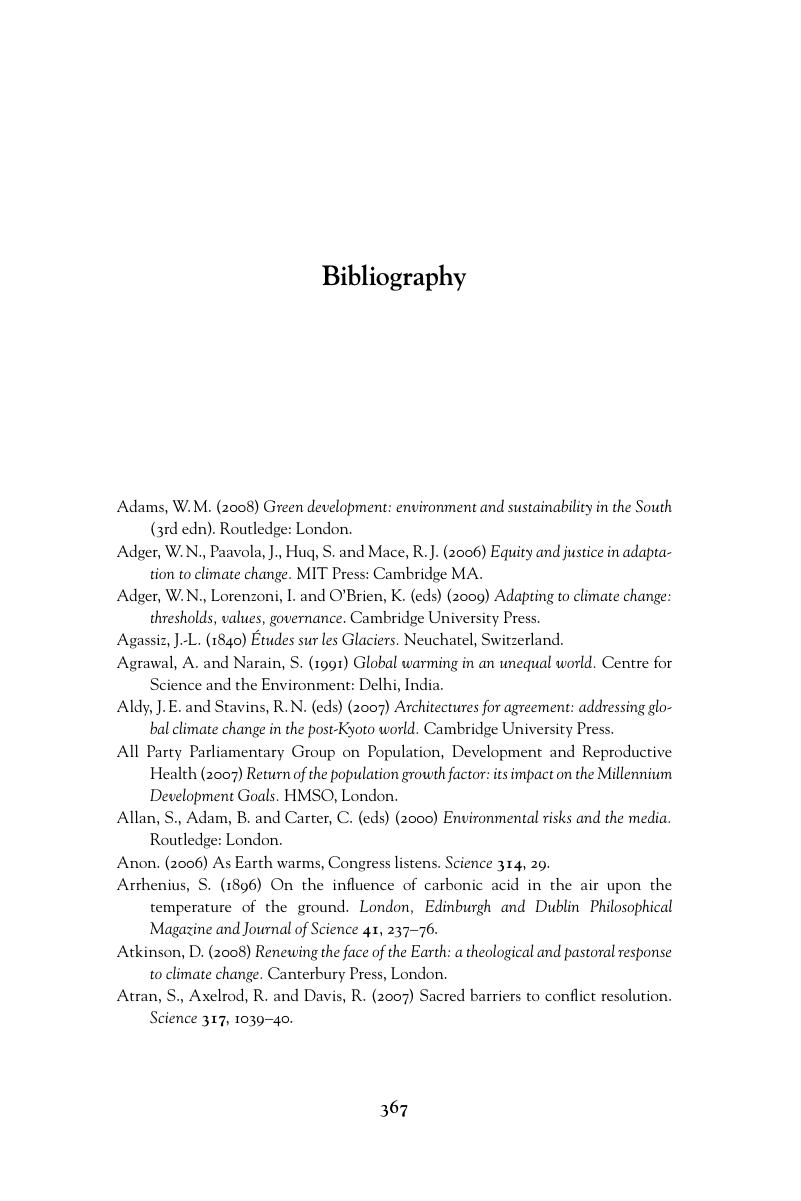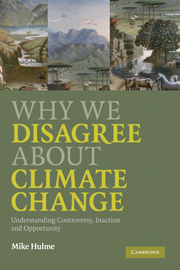Book contents
- Frontmatter
- Contents
- List of Figures
- List of Tables
- List of Boxes
- Acknowledgements
- Foreword
- Preface
- 1 The Social Meanings of Climate
- 2 The Discovery of Climate Change
- 3 The Performance of Science
- 4 The Endowment of Value
- 5 The Things We Believe
- 6 The Things We Fear
- 7 The Communication of Risk
- 8 The Challenges of Development
- 9 The Way We Govern
- 10 Beyond Climate Change
- Bibliography
- Index
- References
Bibliography
Published online by Cambridge University Press: 05 April 2013
- Frontmatter
- Contents
- List of Figures
- List of Tables
- List of Boxes
- Acknowledgements
- Foreword
- Preface
- 1 The Social Meanings of Climate
- 2 The Discovery of Climate Change
- 3 The Performance of Science
- 4 The Endowment of Value
- 5 The Things We Believe
- 6 The Things We Fear
- 7 The Communication of Risk
- 8 The Challenges of Development
- 9 The Way We Govern
- 10 Beyond Climate Change
- Bibliography
- Index
- References
Summary

- Type
- Chapter
- Information
- Why We Disagree about Climate ChangeUnderstanding Controversy, Inaction and Opportunity, pp. 367 - 380Publisher: Cambridge University PressPrint publication year: 2009
References
- 1
- Cited by



